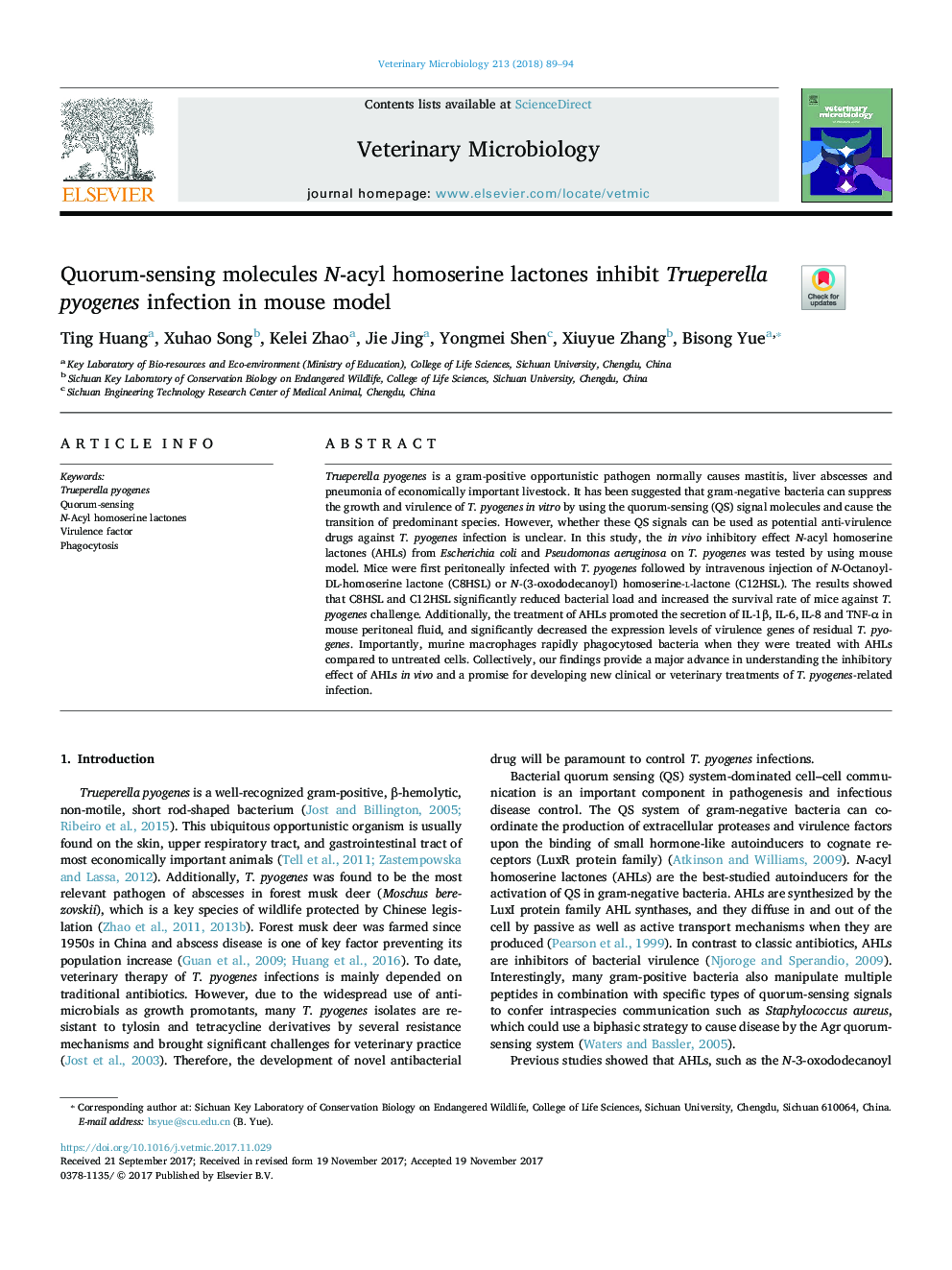| کد مقاله | کد نشریه | سال انتشار | مقاله انگلیسی | نسخه تمام متن |
|---|---|---|---|---|
| 8505655 | 1555310 | 2018 | 6 صفحه PDF | دانلود رایگان |
عنوان انگلیسی مقاله ISI
Quorum-sensing molecules N-acyl homoserine lactones inhibit Trueperella pyogenes infection in mouse model
دانلود مقاله + سفارش ترجمه
دانلود مقاله ISI انگلیسی
رایگان برای ایرانیان
کلمات کلیدی
موضوعات مرتبط
علوم زیستی و بیوفناوری
علوم کشاورزی و بیولوژیک
علوم دامی و جانورشناسی
پیش نمایش صفحه اول مقاله

چکیده انگلیسی
Trueperella pyogenes is a gram-positive opportunistic pathogen normally causes mastitis, liver abscesses and pneumonia of economically important livestock. It has been suggested that gram-negative bacteria can suppress the growth and virulence of T. pyogenes in vitro by using the quorum-sensing (QS) signal molecules and cause the transition of predominant species. However, whether these QS signals can be used as potential anti-virulence drugs against T. pyogenes infection is unclear. In this study, the in vivo inhibitory effect N-acyl homoserine lactones (AHLs) from Escherichia coli and Pseudomonas aeruginosa on T. pyogenes was tested by using mouse model. Mice were first peritoneally infected with T. pyogenes followed by intravenous injection of N-Octanoyl-DL-homoserine lactone (C8HSL) or N-(3-oxododecanoyl) homoserine-l-lactone (C12HSL). The results showed that C8HSL and C12HSL significantly reduced bacterial load and increased the survival rate of mice against T. pyogenes challenge. Additionally, the treatment of AHLs promoted the secretion of IL-1β, IL-6, IL-8 and TNF-α in mouse peritoneal fluid, and significantly decreased the expression levels of virulence genes of residual T. pyogenes. Importantly, murine macrophages rapidly phagocytosed bacteria when they were treated with AHLs compared to untreated cells. Collectively, our findings provide a major advance in understanding the inhibitory effect of AHLs in vivo and a promise for developing new clinical or veterinary treatments of T. pyogenes-related infection.
ناشر
Database: Elsevier - ScienceDirect (ساینس دایرکت)
Journal: Veterinary Microbiology - Volume 213, January 2018, Pages 89-94
Journal: Veterinary Microbiology - Volume 213, January 2018, Pages 89-94
نویسندگان
Ting Huang, Xuhao Song, Kelei Zhao, Jie Jing, Yongmei Shen, Xiuyue Zhang, Bisong Yue,